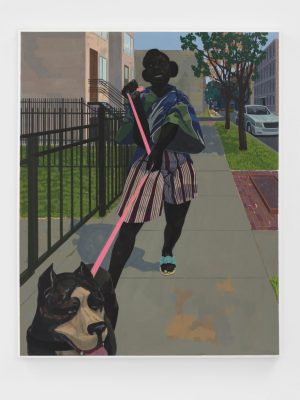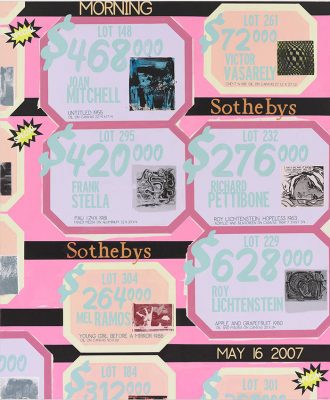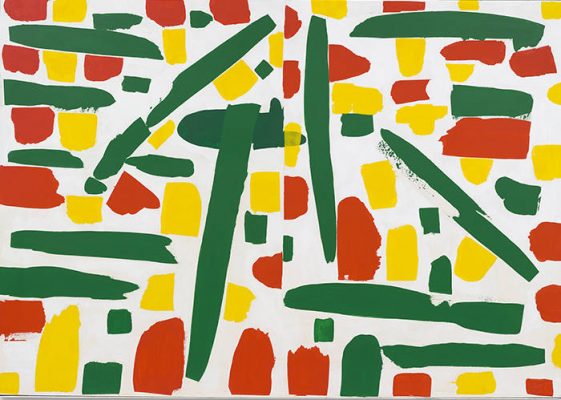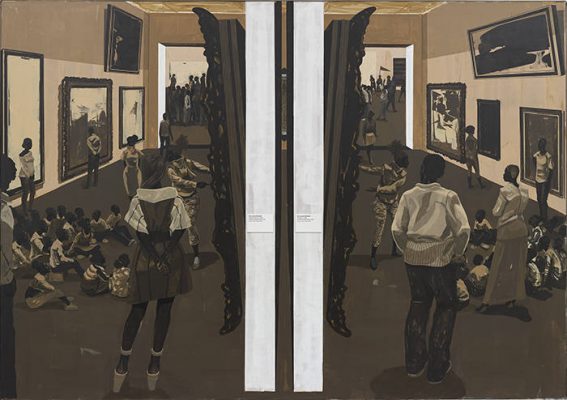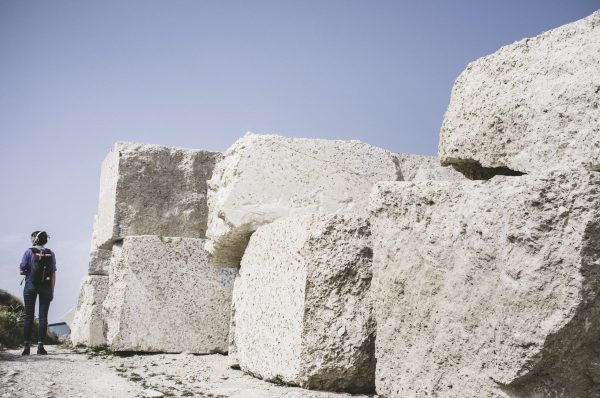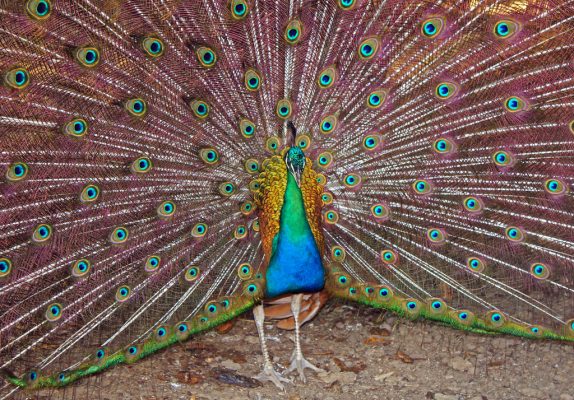Kerry James Marshall, an artist who grew up both devouring and scrutinising the Western art historical canon, has never been coy about his artistic ambitions: inscribing the black figure in the history of painting – a counter-archive of sorts aimed at correcting its painfully obvious exclusion. History of Painting is precisely the title of his second presentation at the London branch of David Zwirner, which gathers 13 new paintings completed this year. Most of these are acutely observed depictions of everyday vignettes within the realist tradition: a woman walking a dog in the street, or a man hanging from the branch of a tree gazing out into a wetland. In another canvas, a woman prances just out of the shower, clad only in a pair of stripy panties and a towel in her hair as she chooses an outfit for the evening.
Garments and design features tell us these are contemporary scenes, exploring the African American vernacular with a pop touch. But spend a little more time in front of them and the modern veneer morphs into something much more classical, both in terms of motif and composition. The bather, for example, is a trope that has fascinated painters across centuries – from Rembrandt, who in 1654 painted both ‘Bathsheba at Her Bath and Woman bathing in a Stream’, to Edgar Degas, who in the decade between 1885 and 1895 compulsively painted women at their ablutions. Portraits of sitters with their dogs, typically aristocrats and nobles, have also been an Old Masters staple, just as much as the semblance of a young man seizing the landscape became a recurrent topic for the Romantics.
The centrepiece of this exhibition, ‘Untitled (Underpainting)’, has been installed upstairs. The large canvas presents a scene in a museum, where an educator is passionately explaining a painting to a group of children. In a dynamic gesture lovingly captured, her fingers are pointing at the canvas, which we can’t really see. In the foreground, some adults observe this pedagogical moment with their backs to us. In the background, a multitude of museum-goers traverse the gallery behind. Every single figure in the painting is black. But something else strikes the eye: the composition is a double scene, flipped onto itself as if in a mirror. This produces two results. First, it creates a sort of ‘rabbit hole’ effect, as if we had plunged into a hallucinatory museum world in which public, staff and art were, for a change, all black. Secondly, the mirror or doubling device situates us, again, in the realm of art history: in the reflective games of Velázquez’s ‘Las Meninas’ (1656) or Manet’s ‘A Bar at the Folies-Berge’ (1881-82). But, as is typical of Marshall, these historical references are only subtly invoked, never mimicked.
I think I find ‘Untitled (Underpainting)’ so relevant because it breathes life into one of the main theses of Helen Molesworth’s excellent essay Kerry James Marshall and the Museum, published in the catalogue accompanying his celebrated retrospective Mastry: (2016-17). In it, Molesworth astutely points out how, in focusing exclusively on the role of the black figure within the realm of historical painting when reading Marshall’s work, we miss one crucial aspect: its sustained engagement with the logic of institutional critique. In his prodding at the lack of representation of black bodies (and minds) in institutional discourse, Marshall can be read as an unlikely continuator of the endeavours of the likes of Michael Asher, Hans Haacke and Andrea Fraser. In the same vein, Marshall challenges the so-called neutrality and objectivity of the museum, revealing it as a device that doesn’t innocently house art but, in fact, dictates what art is – and, therefore, who gets to make it and see it.
Marshall’s critique of systemic racism doesn’t stop at the museum: the art market itself figures heavily in this show too. This is no doubt due to his now-stellar position in the market, following the record-breaking sale of his painting ‘Past Times’ (1997) for $21.1 million – the most ever paid for the work of a living African-American artist (the rapper Sean Combs was the buyer, and it sold at Sotheby’s New York last May). At David Zwirner, the titular series of paintings report the results of four art auctions in 2007 (at Sotheby’s, Christie’s, Phillips and Swann), rendered in the manner of cheap supermarket price signs. A work by Gerhard Richter apparently fetched $1,496,000; an Andy Warhol, $1,383,000; a Faith Ringgold, $10,200; a Sam Gilliam $9,600… You get the idea.
Despite its indisputable critical load, what never ceases to amaze me about Marshall’s work is how joyful it is. His paintings emanate a sense of pride and dignity, of community and wisdom, a feeling that things can actually change for the better. In fact, with his resolute infiltration in museum collections, the upper echelons of the market and critical discourse, Marshall is already changing that institutional fabric. Not quite the world that‘Untitled (Underpainting)’ depicts, but a huge step forward.
